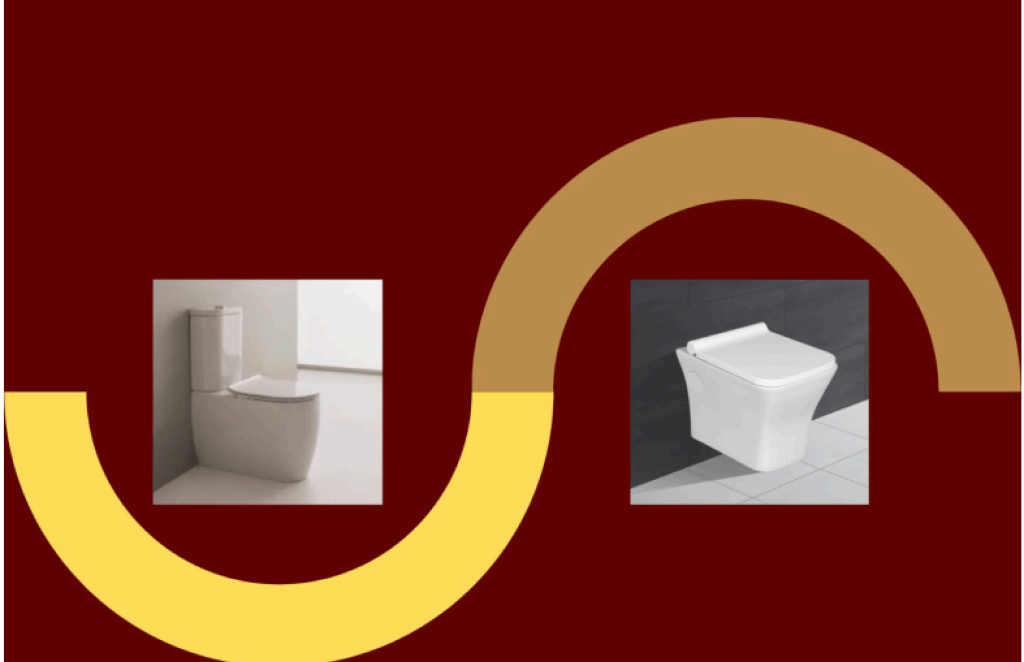Choosing a WC might seem like a small detail in the grand scheme of construction, but it’s a crucial decision that impacts comfort, functionality, and aesthetics for years to come. This guide breaks down the key factors to consider when selecting a WC during the construction phase, catering to homeowners, architects, and builders alike.
1. Understanding Your Options: Floor Standing vs. Wall Hung
- Floor Standing WCs: The traditional choice, these are directly mounted to the floor.They are generally easier and less expensive to install, and repairs are typically simpler.They offer stability and a more familiar aesthetic.
- Wall Hung WCs: These toilets are mounted to the wall, with the cistern concealed within the wall cavity. They offer a modern, clean look, make cleaning easier, and can create a sense of spaciousness, especially in smaller bathrooms. However, they require a more robust wall structure to support the weight and are generally more expensive to install due to the concealed cistern and mounting frame.
2. Key Considerations During Construction:
- Rough-in Plumbing: This is the most critical stage. For wall-hung WCs, the exactplacement of the drainage pipe and the installation of the supporting frame within the wall cavity must be planned and executed before the wall is finished. For floor-standing WCs, the rough-in plumbing needs to be correctly positioned for the chosen model. Changes after the wall is finished can be costly and disruptive. This is the most important consideration during construction.
- Wall Structure: Wall-hung WCs require a strong, reinforced wall to support the weight ofthe toilet and the user. This often means additional framing or specialized supportstructures within the wall cavity. This needs to be planned and built during the framingstage. Standard drywall is not sufficient.
- Space Planning: Consider the layout of your bathroom. Wall-hung WCs can save floor space, making them ideal for smaller bathrooms. However, they also require space within the wall for the cistern. Ensure adequate space for both the toilet and the necessary plumbing.
- Budget: Floor-standing WCs are generally more budget-friendly, both in terms of the unit cost and installation. Wall-hung WCs, with their concealed cisterns and more complex installation, tend to be more expensive. Factor in the cost of the unit, the support frame (for wall-hung), and the labor for installation.
- Accessibility: Consider accessibility needs. Wall-hung WCs allow for adjustable height, which can be beneficial for users with mobility issues.
- Style and Aesthetics: Wall-hung WCs offer a sleek, modern look, while floor-standing WCs can complement more traditional bathroom designs. Choose a style that aligns with your overall bathroom aesthetic.
3. Choosing the Right Height:
- Standard Height: The standard height for a WC is around 15-17 inches
- Comfort Height: A slightly taller height (around 17-19 inches) can be more comfortable for taller individuals and those with mobility limitations. Wall-hung WCs offer more flexibility in setting the height.
4. Flushing Systems:
- Dual-flush: Most modern WCs offer dual-flush systems, allowing you to choose between a full or partial flush, saving water.
- Washdown vs. Siphonic: Understand the differences between washdown and siphonic flushing systems, as they impact flushing efficiency and water consumption.
5. Material and Finish:
- Vitreous China: The most common material for WCs, known for its durability and easy cleaning.
- Other Materials: While less common, other materials like stainless steel and ceramic are also available.
6. Working with Professionals:
- Architects: Architects can help you integrate the WC seamlessly into your overallbathroom design and ensure proper planning for plumbing and wall structure.
- Builders: Builders are responsible for the correct installation of the WC, including the rough-in plumbing and any necessary wall reinforcement.
- Plumbers: Plumbers are essential for connecting the WC to the water supply and drainage system.
7. Checklist for Construction:
- Confirm WC type (floor-standing or wall-hung) before rough-in plumbing begins.
- Ensure adequate wall support for wall-hung WCs during framing.
- Verify rough-in plumbing placement before finishing walls.
- Coordinate with your architect, builder, and plumber to ensure proper installation.
- Consider accessibility needs and choose the appropriate height.
- Select a flushing system that meets your needs.
Pros and Cons
| PROS AND CONS | |
|---|---|
| WALL HUNG | FLOOR STANDING |
| 1. UTILITY VALUE | |
| Modern and hygienic: The elevated design makes it easier to clean the floor beneath the toilet, promoting better hygiene. | Traditional and familiar: Most people are used to floor standing WCs, making them a comfortable and familiar choice. |
| Space-saving: Creates an illusion of more space, making it ideal for small bathrooms. | Easy to use: Simple and straightforward to use, no need for any adjustments or special instructions. |
| Customizable height: Can be installed at a customized height, making it more accessible for people with mobility issues. | Reliable and durable: Known for their sturdiness and longevity, can withstand heavy use. |
| Aesthetically pleasing: Adds a touch of modern elegance to the bathroom. | Easy to repair and maintain: Simple access to drain and water supply makes repairs and maintenance easy. |
| 2. Room Size Considerations | |
| Ideal for small bathrooms: Creates an illusion of more space, making it ideal for small bathrooms. | Suitable for all bathroom sizes: Can be installed in any bathroom, regardless of size. |
| Requires wall support: Needs a sturdy wall to support the weight of the toilet and the user. | May take up more space: Can make a small bathroom feel cramped. |
| 3. Installation Methods | |
| Complex installation: Requires professional installation due to in-wall plumbing and support structures. | Easy and straightforward installation: Simple and quick to install, no need for extra wall support. |
CONCLUSION:
Ultimately, the choice between a floor-standing WC and a wall-hung depends on your individual needs and preferences. By carefully considering these factors during the construction phase, you can ensure that you choose the right WC for your bathroom, maximizing comfort, functionality, and style. Don’t leave this important decision to the last minute!






